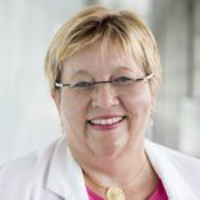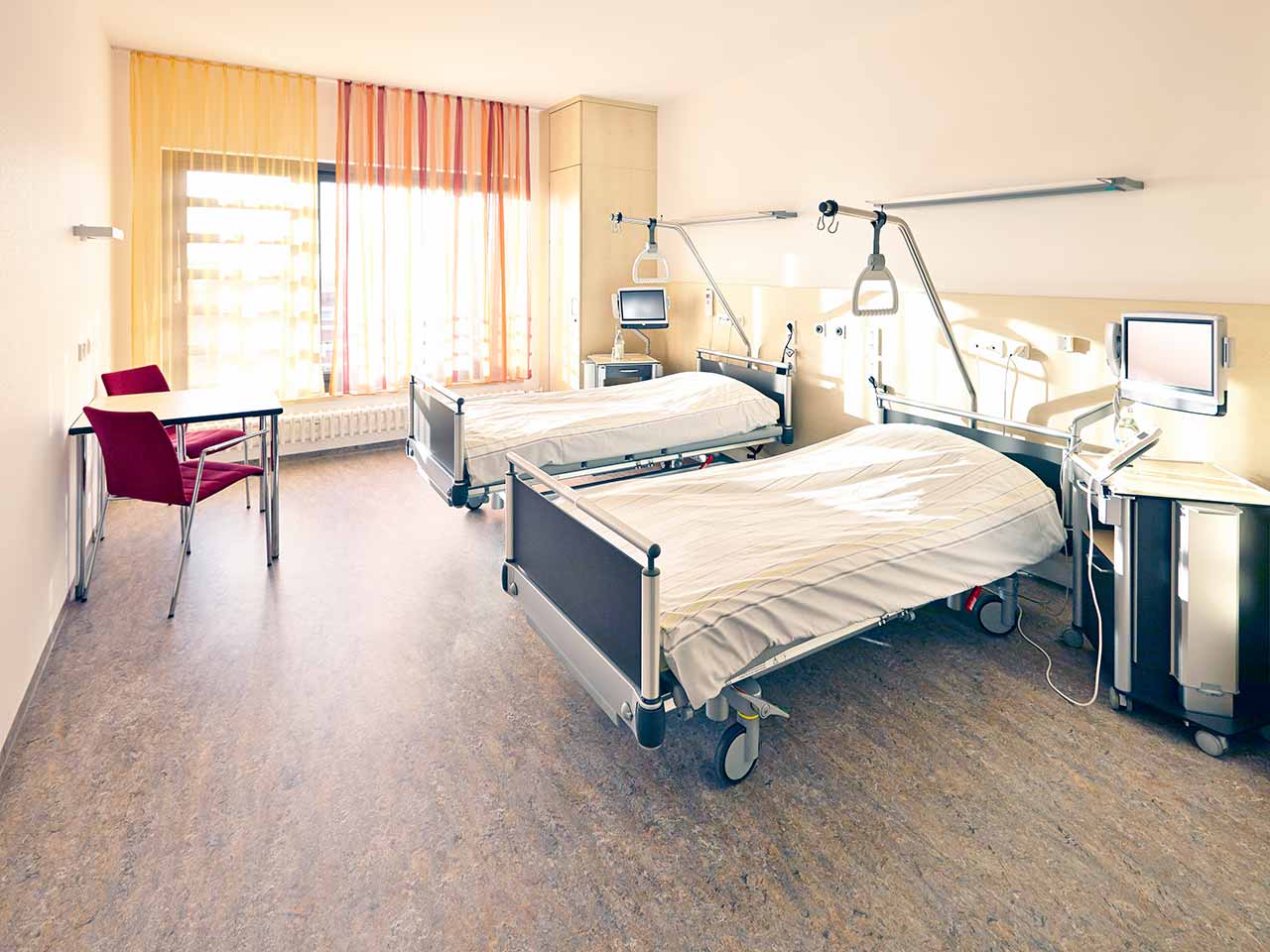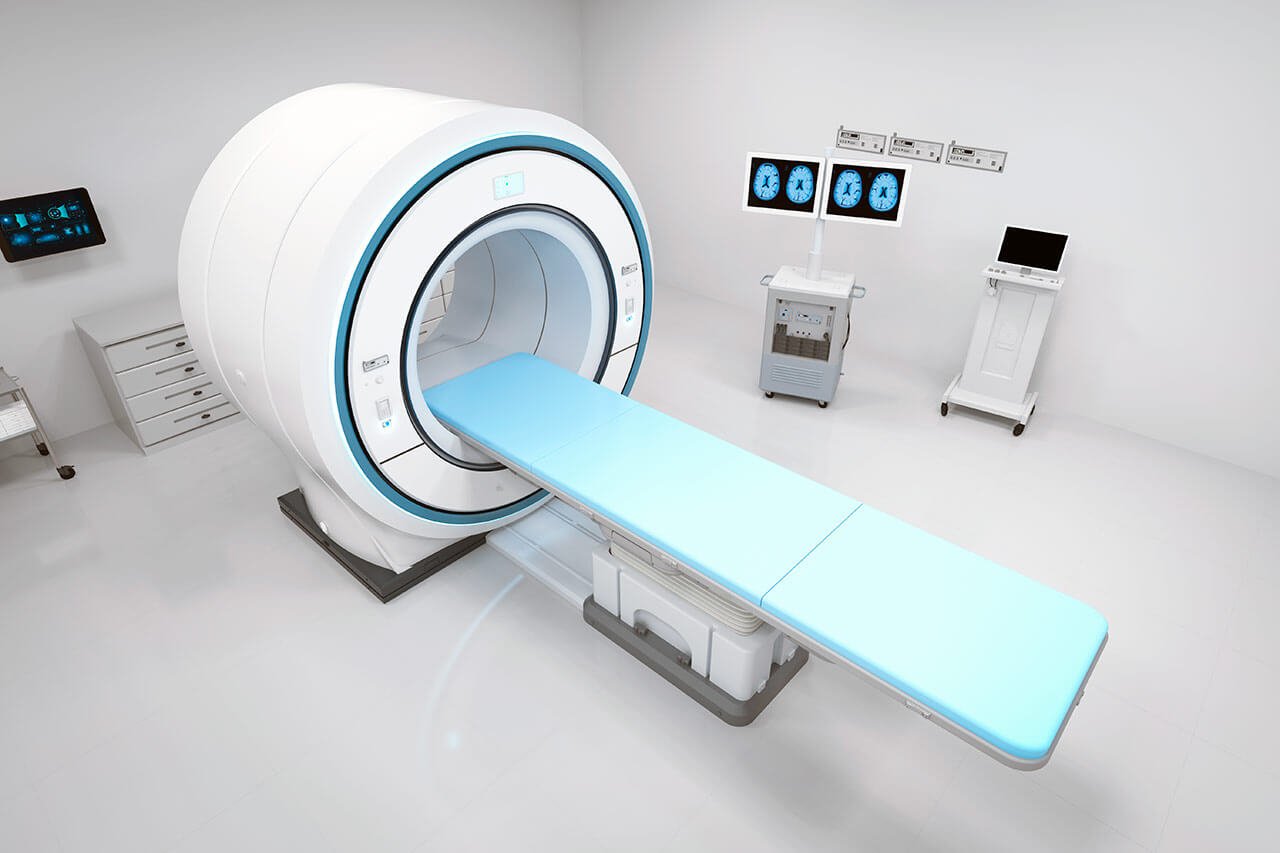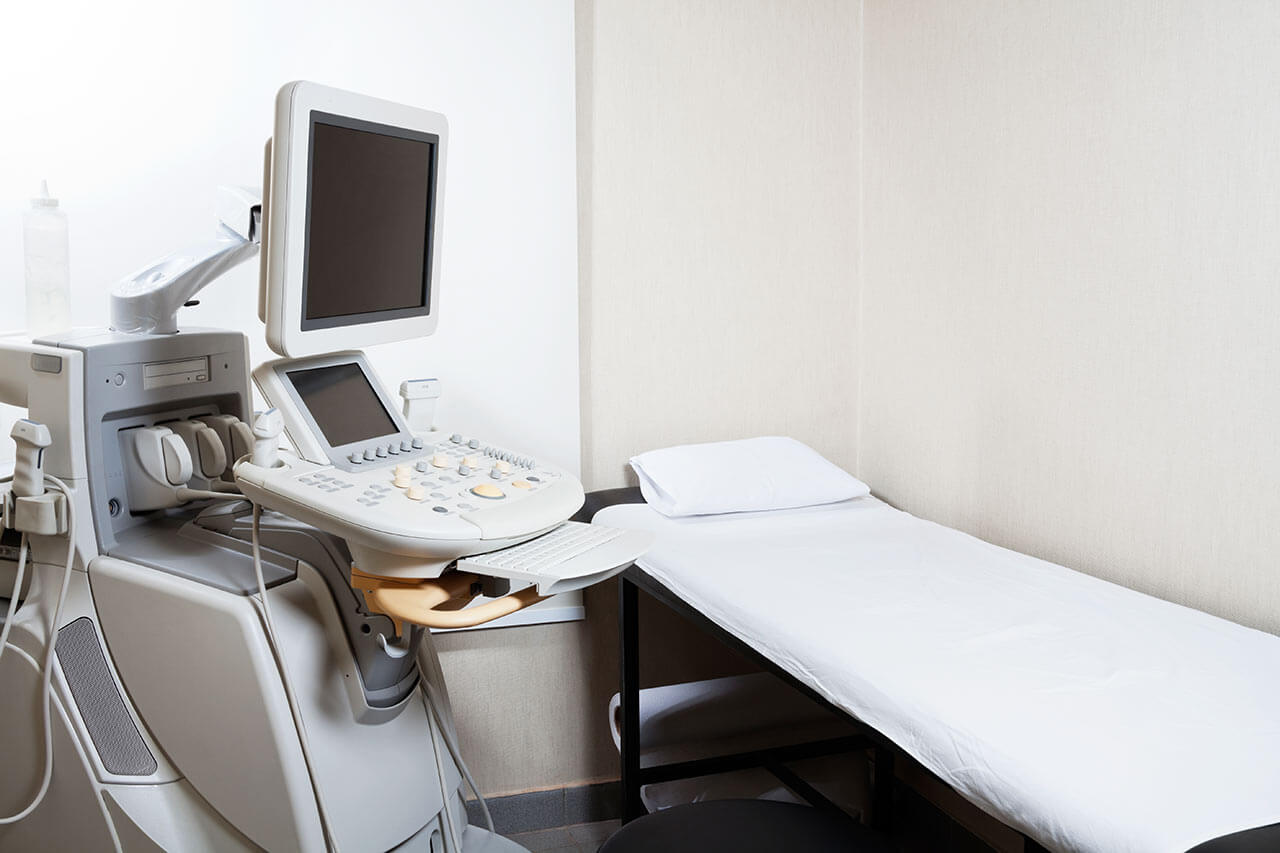
The program includes:
- Initial presentation in the clinic
- clinical history taking
- review of medical records
- physical examination
- laboratory tests:
- complete blood count
- biochemical analysis of blood
- inflammation indicators
- indicators blood coagulation
- x-ray chest examination
- lung function analysis
- allergy status
- chest CT/ MRI (on indication 650/1200€)
- nursing services
- services of all leading experts
- development of individual treatment plan
Required documents
- Medical records
- Spirometry (if available)
- Chest X-ray (if available)
Service
You may also book:
 BookingHealth Price from:
BookingHealth Price from:
About the department
The Department of Pulmonology at the University Hospital Ulm offers the full range of medical services in the area of its competence. The medical team specializes in the diagnostics and treatment of pneumonia, bronchial asthma, chronic obstructive pulmonary disease, pulmonary fibrosis, pulmonary hypertension, obstructive sleep apnea, and other pulmonary diseases. Of particular interest is the treatment of lung cancer. Patients with malignant lung tumors are in the safe hands of a medical team consisting of thoracic surgeons, oncologists, radiation therapists, radiologists, and other specialists. The medical facility has gained impressive experience in providing medical care to patients with COVID-19 coronavirus infection. An important focus of the department's pulmonologists is on diagnostic and therapeutic bronchoscopy. More than 1,600 such endoscopic procedures are performed here every year, which testifies to the great experience of the medical facility in this field. The department also includes an advanced Pulmonary Function Laboratory and a Sleep Laboratory with 5 polysomnography stations. Many procedures are performed in the department on an outpatient basis without a mandatory hospital stay. The department is headed by Dr. med. Gerlinde Schmidtke-Schrezenmeier.
The priority clinical focus for the department's doctors is the diagnosis and treatment of lung cancer. This type of oncology is considered to be one of the most common cancers worldwide, along with breast, prostate, and colon cancer. The main risk factor for lung cancer is smoking, including passive smoking. The department's doctors conduct a comprehensive examination to confirm the diagnosis, including laboratory tests (a complete blood count and tumor marker tests), imaging tests (X-ray, CT, and MRI), endoscopic examinations (bronchoscopy and mediastinoscopy), and a biopsy with a subsequent histological examination of the obtained material. As for the treatment, each clinical case of oncology is unique, so a treatment regimen for the patient is developed during interdisciplinary tumor boards. The most effective treatment method for lung cancer in its early stages is malignant tumor resection. As a rule, localized lung tumors can be removed using endoscopic techniques (bronchoscopy). The specialists also use endobronchial cryotherapy, during which lung tissues affected by oncological processes are destroyed with the help of a cryoprobe under the influence of extremely low temperatures (up to -90°C). The removal of large neoplasms requires minimally invasive or open surgical interventions, during which not only the tumor but also a part of the lung is resected. Chemotherapy is almost always included in the treatment regimen for lung cancer. If clinically indicated, targeted therapy, immunotherapy, or radiation therapy may also be carried out.
The department regularly admits patients with complex forms of bronchial asthma, which is a chronic bronchial obstruction. At the diagnostic stage, the specialists study the patient's anamnesis and perform pulmonary function testing, including stress tests and allergy tests. Unfortunately, to date, there are no methods that can completely cure this disease, but it can be brought under control with the help of medications. The best therapeutic results can be achieved with the use of inhaled glucocorticosteroids. An important role is played by the maximum exclusion of contact with allergens that trigger asthma attacks. The patient is also strongly recommended to keep the house clean (frequent wet cleaning), get rid of fur and woolen items, and refuse pets.
The range of the department's medical services is complemented by medical care for patients with chronic obstructive pulmonary disease (COPD). This is a chronic, progressive disease in which the patient suffers from airway obstruction, leading to restricted airflow. The main cause of COPD development is smoking. To confirm the diagnosis, the department's doctors carry out a chest X-ray, a lung CT scan, spirometry, pulse oximetry, and a 6-minute walk test. Since chronic obstructive pulmonary disease cannot be completely cured, the goal of therapy is to relieve symptoms, reduce the frequency of exacerbations, and increase the patient's physical endurance. This can most often be achieved through drug therapy, oxygen therapy, and pulmonary rehabilitation. The last-line treatment is endoscopic lung volume reduction.
The department's range of medical services includes:
- Diagnostics and treatment of lung cancer
- Diagnostics and treatment of bronchial asthma
- Diagnostics and treatment of chronic obstructive pulmonary disease (COPD)
- Diagnostics and treatment of interstitial lung disease
- Diagnostics and treatment of pulmonary hypertension
- Diagnostics and treatment of pneumonia
- Diagnostics and treatment of obstructive sleep apnea
- Diagnostics and treatment of other pulmonary diseases
The department's therapeutic options include:
- Drug therapy
- Inhalation therapy
- Invasive and non-invasive mechanical ventilation
- Therapeutic endoscopy
- Bronchoscopy
- Endobronchial cryotherapy
- Argon plasma coagulation
- Endoscopic stent implantation for airway stenosis
- Puncture or drainage placement for fluid accumulation in the chest
- Endoscopic lung volume reduction
- Other treatment methods
Photo of the doctor: (c) Universitätsklinikum Ulm
About hospital
The University Hospital Ulm is an advanced medical complex that provides patients with high-class medical care using the very latest scientific achievements. The medical facility has been performing successful clinical activities for more than 40 years and has long earned an excellent reputation throughout Europe. The hospital regularly demonstrates high treatment success rates, takes an active part in the training of medical students, and works tirelessly on promising research projects.
The university hospital consists of 29 specialized departments and 16 scientific institutes, where more than 7,000 highly qualified employees work for the benefit of their patients. More than 55,000 inpatients and about 300,000 outpatients are treated here every year. The hospital has 1,274 beds. The medical team of the hospital is focused on providing personalized medical services using the most modern and sparing diagnostic and treatment methods.
The University Hospital Ulm is the largest medical complex in the region, and practically all areas of modern medicine are represented here. Transplantology and oncology are among the priority areas of clinical activity in the medical facility. The hospital holds leading positions in the world in bone marrow transplantation. In addition, the hospital has advanced experience in cancer treatment. The Comprehensive Cancer Center is recognized as the leading facility of this kind in the country, and it is certified by the German Cancer Society (DKG). It provides effective treatment for various types of cancer. The center also offers innovative CAR T-cell therapy. In addition, the Cancer Center is actively engaged in research activities to improve available treatment methods and develop innovative therapeutic techniques to fight cancer.
Along with the use of advanced technologies, doctors show respect, understanding, and a humane attitude toward the patient. The medical team includes competent psychologists, who are always ready to provide assistance and support to the patients and their families during the therapeutic process.
Photo: (с) depositphotos
Accommodation in hospital
Patients rooms
The patients of the University Hospital Ulm live in comfortable single and double rooms with a modern design and light colors. All patient rooms have an ensuite bathroom with a toilet and a shower. The patient room furnishings include a comfortable automatically adjustable bed, a bedside table, a wardrobe, a table and chairs, a telephone, a radio, and a TV. Wi-Fi access is also available in patient rooms.
The hospital also offers enhanced-comfort rooms, which additionally have a safe, a refrigerator, and upholstered furniture. The bathroom in the enhanced-comfort room has changeable towels, a cosmetic mirror, a hairdryer, and toiletries.
Meals and Menus
Patients and their accompanying person are offered three meals a day: breakfast, lunch, and dinner. The patient and accompanying person have a choice of three menus every day, including a vegetarian menu. Patients staying in the enhanced-comfort rooms are also offered light snacks, fruits, desserts, and hot and cold drinks in the comfortable lounge area.
If, for some reason, you do not eat all the foods, you will be offered an individual menu. Please inform the medical staff about your dietary preferences prior to treatment.
Further details
Standard rooms include:
![]() Shower
Shower
![]() Toilet
Toilet
![]() Wi-Fi
Wi-Fi
![]() TV
TV
Religion
The hospital has a chapel where Catholic and Protestant services are held weekly. The services are also broadcast on the internal television channel of the hospital. The chapel is open 24 hours a day for visits and prayers.
The services of other religious representatives are available upon request.
Accompanying person
Your accompanying person may stay with you in your patient room or at the hotel of your choice during the inpatient program.
Hotel
You may stay at the hotel of your choice during the outpatient program. Our managers will support you for selecting the best option.






